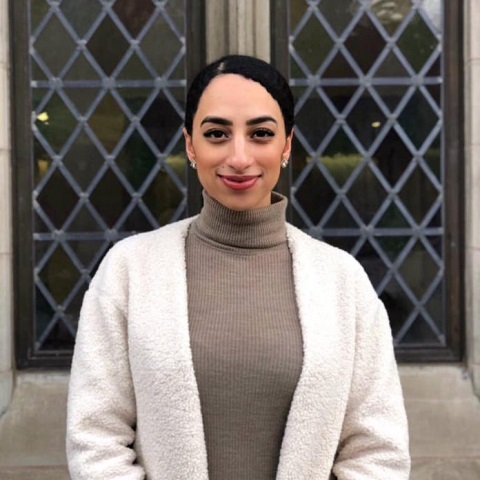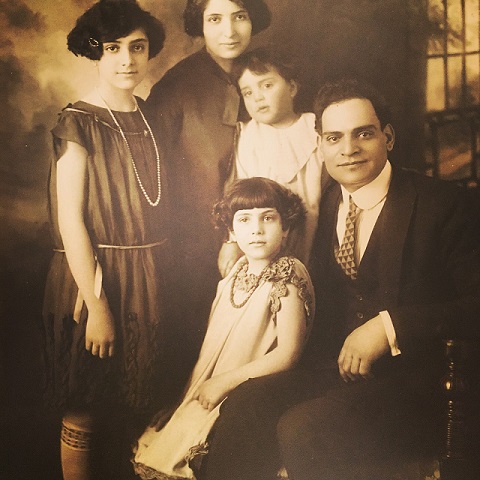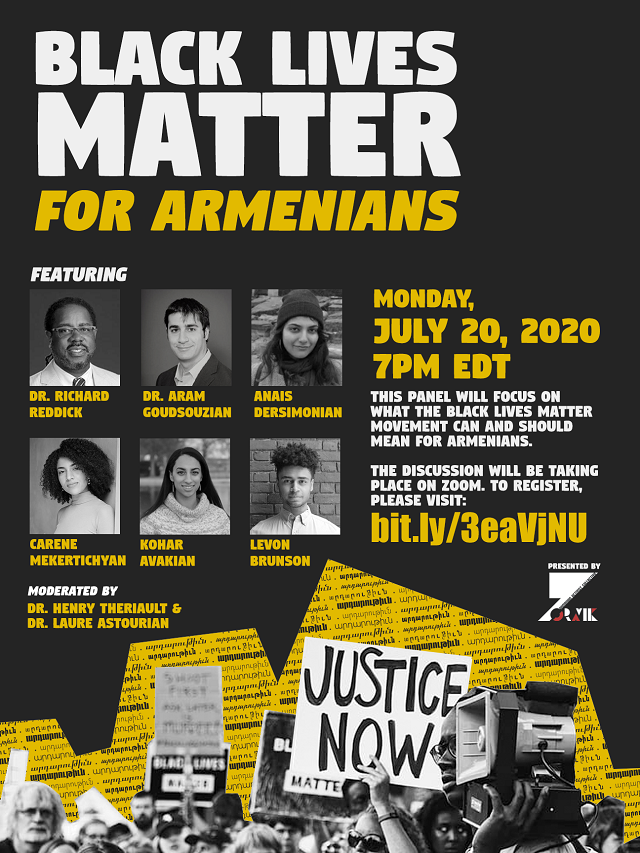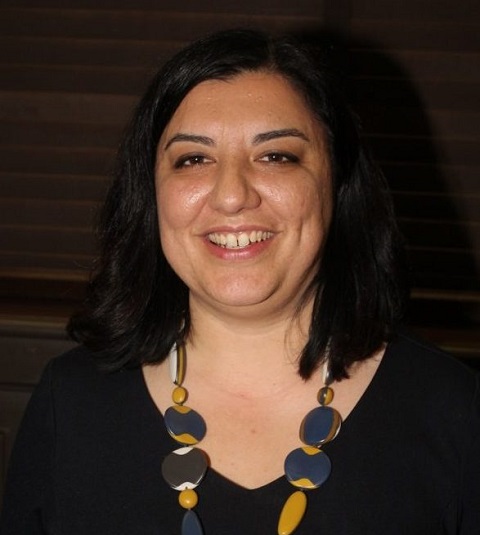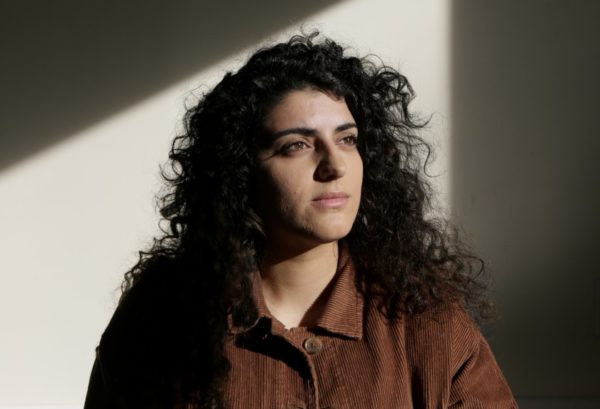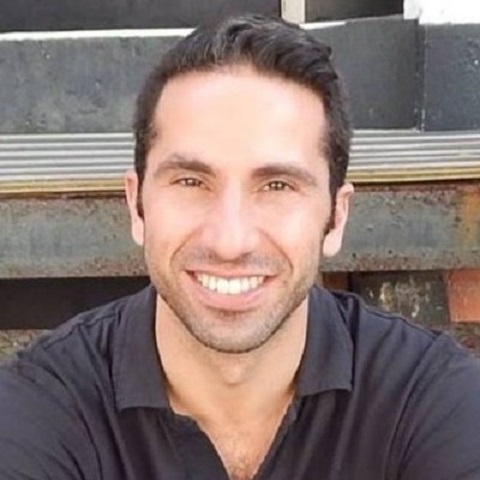LOS ANGELES — On Thursday, February 12, four academics joined for a lively virtual discussion to highlight the importance of “ethnic studies” and its inclusion in the K-12 curriculum, something which has mostly begun on the West Coast, and to delve into the future of Armenian academia in the US and how it will grapple with pressing issues of race in society.
The attendees of the meeting were from a broad spectrum of scholars and members of the Armenian community. The four discussants were Dr. Suzie Abajian (PhD in Education and activist for Ethnic Studies in California); Sophia Armen (PhD candidate in Ethnic Studies, UC-San Diego); Kohar Avakian (PhD student in American Studies, Yale); and Thomas Simsarian Dolan (PhD candidate in American Studies, George Washington University). The panel discussion was organized by the Armenian Action Network and the Armenian-American Studies Collective.
The conversation was opened by Abajian, who gave an extensive history of Ethnic Studies in the Arizona and California public schools curriculum, something which she helped fight to make possible over the years. As of late, Ethnic Studies has been banned in Arizona under the theory that it is “racist” while in California there is currently a mandate for a model curriculum to be created by next month, for Ethnic Studies to be included in K-12 schools as well as colleges.
Abajian’s discussion of school curriculum was difficult to follow for someone not acquainted with the contours of the debate in California and Arizona. Abajian did make a point about Armenians in regard to Ethnic Studies. The Ethnic Studies curriculum initially focused on the four categories of Black, Native American, Asian and Chicano. Because Middle Eastern ethnicities were not included, some political groups who were opposed to the Ethnic Studies curriculum had claimed that the Armenian community, among others, did not support Ethnic Studies. Abajian’s colleagues, in concert with the Armenian National Committee of America (ANCA), protested this categorization, saying that Armenians support Ethnic Studies but want to be included in it. Abajian implored listeners to support the Ethnic Studies inclusion in state curricula, so that “students can see themselves in the curriculum.”
The other discussants appeared to be concerned with a wholly different issue: the intersection of Armenian Studies and racial issues in America. Several topics consistently were raised, one of which was the status of Armenians in America as “legally white” which was defined in the Supreme Court case, US vs. Cartozian (1925). The fact that Armenians are supposedly “white” in the US conflicts with experiences of racism many Armenians have faced in this country. Sophia Armen discussed the Cartozian case at length. The landmark case defined Armenians as legally white in an era when “Orientals,” which often included Middle Eastern ethnicities, were not allowed to become naturalized citizens. The members of the panel discussed that not only was “whiteness” imposed on the Armenians by the US government, but that the Armenian community was rallying to gain this status at the time, to avoid the imminent threat of mass deportation. Therefore, racial categories were not only a top down construct but the people themselves also participated in that construction. (It should be noted, as one of the discussants did, that the star witness at the trial, Jewish American anthropologist Franz Boas, declared in his testimony that “race was a social construct.”) Nevertheless, many Armenians at the time as well as today have experienced racism in the United States. Because of this, the definition of Armenians as white sometimes seems like a technicality, stemming from a Supreme Court case that only made such a declaration for the purposes of now-defunct immigration laws, and this definition raises questions and problems for defining Armenians’ experience in the United States in regard to race.
Armen also discussed the foundations of Ethnic Studies, stating that the field is rooted in questions of “power and race” and that it talks about “narratives that have been erased.” This is important to Armenians, she continued, because we have been bumping up against erasure during our entire experience in the US. She stated that sometimes “we humble Armenians” are shy to place our stories in these contexts. The field of Ethnic Studies is evidence driven and data driven, she says, and while race is a construct it’s also “a social fact.”
Mixed Heritage
Kohar Avakian, a native of Worcester, MA, whose father is Armenian and mother is mixed Black/Native American, and who grew up in an Armenian Protestant church, described how her exploration of her own complex background led her to the academic questions she has been raising. She described that as a scholar in the American Studies field, one of the problems with the field is that it was originated by white men who “believed in American exceptionalism and Manifest Destiny,” and how those early scholars were glorifying the “project of America” which in Avakian’s words “is a settler-colonial project.” Avakian stated that current American Studies scholars are questioning and revising the views of earlier scholars. Avakian also characterized the situation as such where American Studies is considered the larger field that has more authority; while Ethnic Studies is a reaction to the topics not addressed in American Studies and “insists on being heard. “
Thomas Simsarian Dolan pointed out in response that the birth of American Studies had some positive motives. One of the sources of the field at its inception were scholars, who in Simsarian Dolan’s words, essentially said “we’re spending too much time studying Shakespeare.” In other words, American Studies was a reaction to Eurocentrism in the early American academic world. Later, he continued, Ethnic Studies came along as a reaction to White Supremacy. Simsarian Dolan proffered the idea of a field of “Armenian-American Studies” focusing on the Armenian experience in the United States. Other discussants, such as Abajian, agreed with this, in the sense that when Armenians are mentioned in the school curriculum in this country, it is often only in the context of the Armenian Genocide and immigration to the US as refugees at that time. Since no other issue or story is addressed, Armenians are “perpetual foreigners” in America and as things are presented, “nothing has happened to Armenians since [the Genocide].”
Simsarian Dolan mentioned the experience of Armenians being surveilled by the US government after the Tourian assassination, during the Cold War, and later, in the context of the Armenian Secret Army for the Liberation of Armenia (ASALA) and other groups in the 1970s and 1980s, as one area of study for “Armenian-American Studies.” He also mentioned the music that has been passed down or developed in the United States since the community was founded and Dr. Sylvia Alajaji’s work on this topic.
American Genocide
One of the topics touched upon by more than one of the discussants was the assertion that the United States is “founded in genocide” of Native Americans. It was mentioned that for these scholars, the “Armenian Genocide” does not just refer to one historical incident (i.e. 1915 or 1895) but that genocide is a “process or structure of power” that is rooted in race in which the Armenians were “constructed” by the Ottoman Government as an “other”, oftentimes as an “other” which is not indigenous to their native land and therefore whose expulsion is justified. In this sense, the US has constructed the Native American as an “other” in the same way and has subjected the indigenous peoples to ongoing genocide which continues to this day, as it may similarly be said of Armenians in Turkey today. On this same topic, Avakian poignantly described her discovery of documents detailing the erasure of the tribe of her Native American ancestors and how this has been left out of history books, just as many Armenian experiences have been left out of history books in Turkey. Avakian invoked a popular topic for the panel, viewing Armenians through the lens of indigeneity. (I.e. as Native Americans are the “indigenous” people of North America, Armenians are the “indigenous” people of Anatolia). Avakian feels that this is a fruitful way to make connections between the Armenian experience and the experience of indigenous peoples in North America and across the globe.
One problem, stated several discussants, is that Armenians have been deemed “white” and therefore their experiences of racism in the United States have been erased and ignored. In this context, Armen brought up the Cartozian case. She mentioned the moment when Cartozian had to present himself before the judge for physical scrutiny (in other words, for the judge to look at him and decide if he was “white”) as one of the poignant moments of the case which showed how vulnerable Armenians were at that time. She stated as well that it is very important to protect and value our oral histories and community history archives, which are valuable to tell the story of America at large. This also played in Simsarian Dolan’s suggestion of a field of “Armenian-American Studies.”
Avakian suggested that this obsession with whiteness continues today and that Armenian Twitter often breaks out into discussions about race and that many members of the Armenian community to this day are obsessed with proving the “whiteness” of Armenians. This is a distraction from more important work we can be doing as a community, says Avakian, and involves the continued use of language that originated in the Eugenics movement.
Simsarian Dolan chimed in that as Armenians, we need to “unlearn” anti-Blackness, but at the same time we need to “deconstruct race.” It was further suggested that as Armenians, we have a particular entrée into that field, due to the unclear racial position and ethnic position we hold in the United States. (See this previous article by Janice Okoomian).
Abajian brought the discussion full circle to the place of Ethnic Studies in the California schools, saying that after being attacked by conservatives, Ethnic Studies has changed into something that could better be referred to as “Multicultural Studies.” Ethnic Studies is rooted in questions of power and race (i.e. what’s known as “Critical Theory”), while Multicultural Studies lacks the important questions and just views every ethnic group from Irish to Armenian to Black in a way that discusses their cultures but not their experiences of racism. Anti-Blackness continues to be the central organizing force of power structures in America, it was claimed, and in our everyday lives we cannot be neutral.
The panel discussion was moderated by Mashinka Hakopian of Los Angeles.
Main Photo Caption: Kohar Avakian




















































